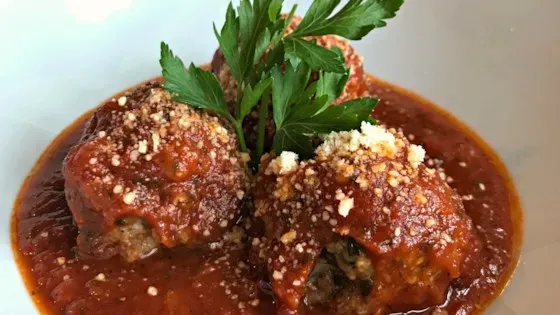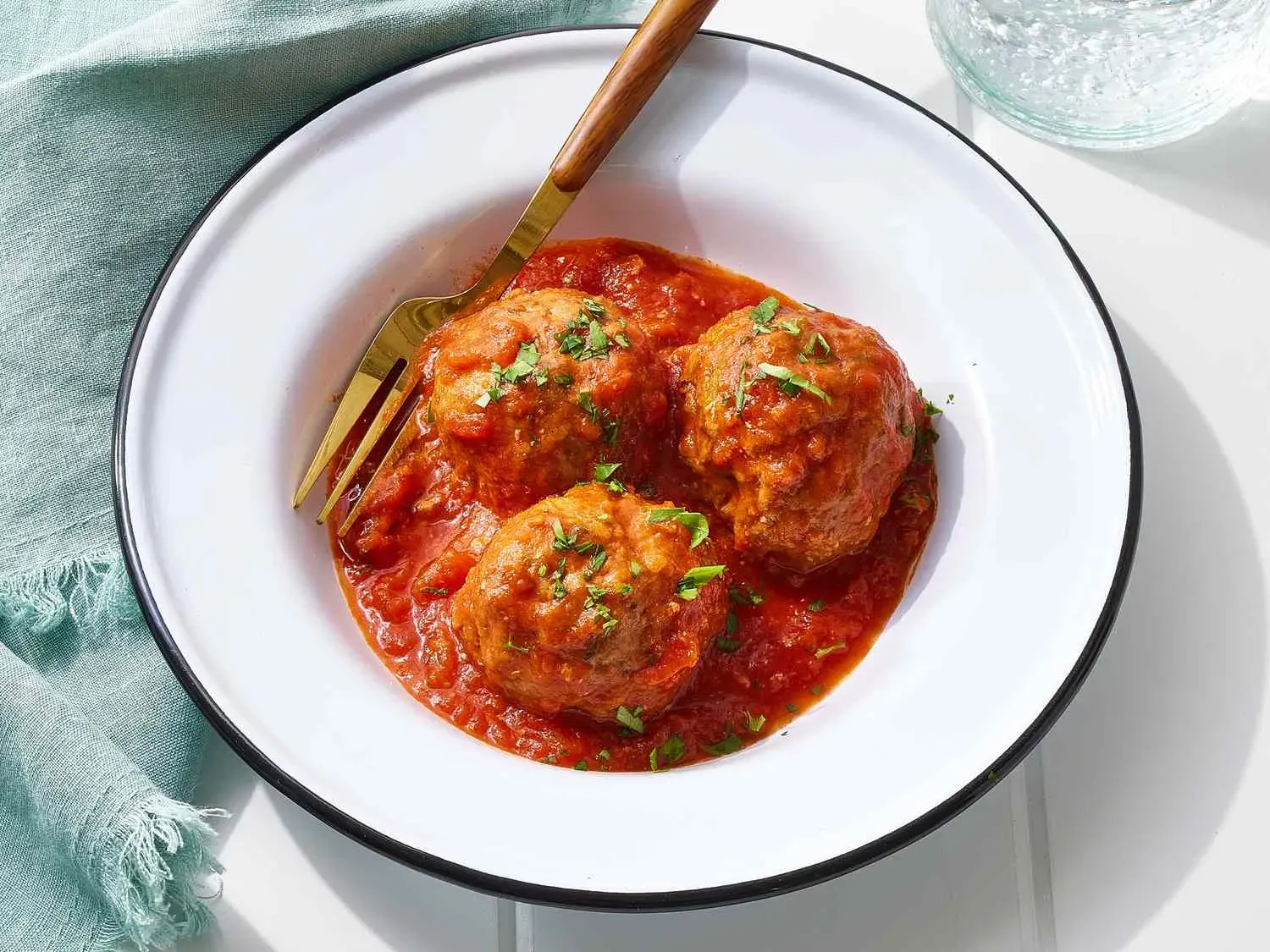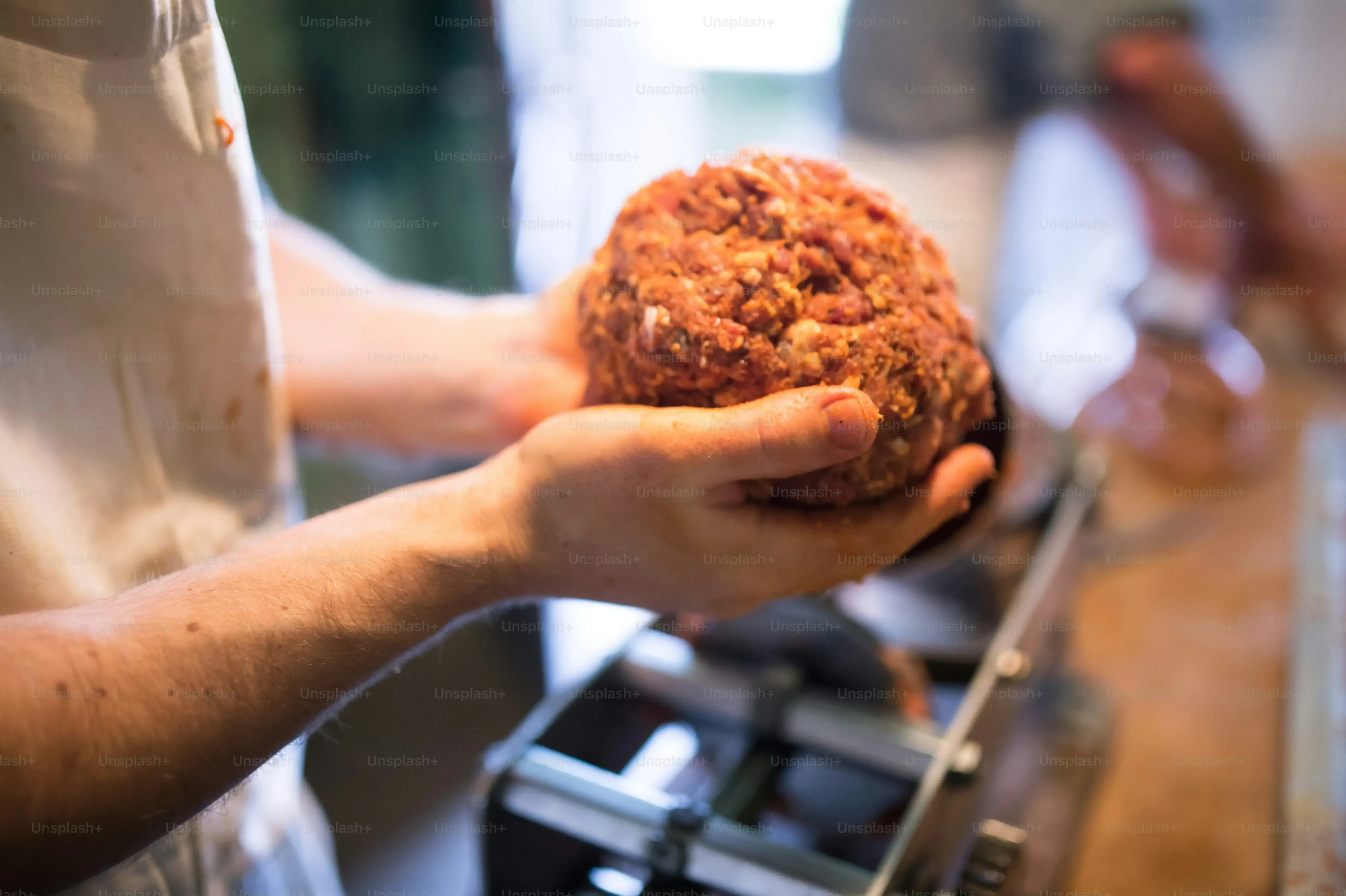Table of Contents
Tired of meatballs that fall apart or leave your kitchen smelling like a grease trap? Making classic Italian meatballs can feel like a chore, especially the frying part that seems to splatter grease on every surface. Chef John, the internet's favorite culinary guide with his no-nonsense approach, offers a smarter way. His take on the classic chef john's italian meatball recipe skips the messy pan-fry and goes straight into the oven. This isn't just about convenience; baking locks in moisture and creates a beautifully tender texture without the added fat. It's a method that delivers flavor without the fuss. We're diving deep into chef john's italian meatball recipe, covering everything you need to know. We'll walk through selecting the right mix of beef and pork, the simple binder secrets, how to prep your aromatics, and the easy baking steps that make these meatballs a weeknight hero or a standout Sunday dinner addition. Forget the frying panic; perfect, tender meatballs are closer than you think.
Gathering Ingredients for Chef John's Meatballs

Gathering Ingredients for Chef John's Meatballs
The Meat Mix: Getting it Right
let's talk meat. Chef John isn't reinventing the wheel here, and that's a good thing. He sticks to the classic Italian combo: half ground beef, half ground pork. Why? Beef brings the flavor backbone, that hearty richness. Pork adds moisture and tenderness. Using both ensures your meatballs aren't dry and dense like some sad hockey pucks you might encounter. Don't cheap out on the meat either. Look for good quality ground meat; it really does make a difference in the final taste and texture. This foundational step is crucial when you're Gathering Ingredients for Chef John's Meatballs.
Binding it All Together
Next up, the binder. This is what holds the whole operation together and keeps your meatballs from crumbling into a meaty dust bunny in the sauce. Chef John uses a mix of bread crumbs, milk, and eggs. The bread crumbs soak up the milk, creating a moist paste that distributes moisture throughout the meat. The eggs act like glue. Using fresh bread crumbs is always better than dried ones; they absorb liquid more effectively. Think of this as the internal scaffolding for your perfect meatball.
What goes into the binder:
- Fresh bread crumbs
- Whole milk
- Large eggs
Aromatics and Flavor Boosters
Now for the good stuff that brings the flavor party. You'll need onion, garlic, Parmesan cheese, and some fresh herbs like parsley. Chef John has a key step here: he cooks the onion first until it's tender and sweet. Dumping raw onion into meatballs is a rookie mistake; it stays crunchy and can taste harsh. Cooking it mellows it out and integrates it better into the mix. Freshly grated Parmesan is non-negotiable; skip the pre-shredded stuff that tastes like wood pulp. These elements are vital when Gathering Ingredients for Chef John's Meatballs, layering flavor from the inside out.
Prepping and Shaping Chef John's Italian Meatball Recipe

Prepping and Shaping Chef John's Italian Meatball Recipe
Mixing the Meatball Magic
Alright, you've gathered your ingredients. Now it's time to bring it all together. In a large bowl, you'll combine the cooked onion, garlic, bread crumb mixture, eggs, Parmesan, parsley, and seasonings with your meat. Don't just dump it all in and start mashing like you're kneading dough. Chef John's method, and frankly, any good meatball method, involves mixing gently. Overmixing is the enemy of tender meatballs; it develops the protein too much, making them tough. Use your hands, yes, but treat the meat like you're folding laundry, not wrestling a bear. Get everything just combined, ensuring the binder and flavorings are distributed evenly. This gentle touch is key when Prepping and Shaping Chef John's Italian Meatball Recipe.
Chilling and Shaping for Success
Once everything is mixed, cover the bowl and stick it in the fridge for at least an hour. This chilling step is non-negotiable. Why? It firms up the mixture, making it much easier to roll into balls. Trying to shape warm, sticky meat mix is a frustrating exercise in futility. Trust me, I learned this the hard way trying to rush things once. After an hour, grab a small scoop (like a cookie scoop) or just eyeball uniform portions. Roll them gently between your palms to form smooth balls. Aim for roughly the same size so they cook evenly. Don't pack them too tightly; remember, we want tender meatballs, not dense little rocks. This cool-down period makes Prepping and Shaping Chef John's Italian Meatball Recipe a breeze.
Tips for perfect shaping:
- Chill the mixture for at least one hour.
- Use a scoop for uniform size.
- Roll gently, don't pack tightly.
- Wet your hands slightly if the mixture is too sticky.
Baking Perfection: Cooking Your Italian Meatballs

Baking Perfection: Cooking Your Italian Meatballs
Setting Up for Success: The Bake is On
the meatballs are rolled, chilled, and ready for their oven close-up. This is where Chef John's baked method shines. No splattering oil, no flipping anxieties. First things first, crank your oven up to 425°F (220°C). You want a hot oven to get a nice crust on the outside without drying out the inside. While it heats, grab a baking sheet and line it with parchment paper or foil. This makes cleanup a breeze – seriously, don't skip this step unless you enjoy scrubbing. Arrange your perfectly formed meatballs on the prepared sheet, leaving a little space between each one so they brown properly. Don't overcrowd the pan; if you have too many, use a second sheet. Proper spacing is key to achieving Baking Perfection: Cooking Your Italian Meatballs.
Into the Heat: Watching Them Cook
Slide that baking sheet into your preheated oven. The baking time is usually somewhere between 15 to 20 minutes. You'll know they're done when they're nicely browned on the outside and cooked through. If you're unsure, you can always sacrifice one: cut it open to check the center. It should be cooked through with no pink. Another reliable method is using an instant-read thermometer; they should register an internal temperature of around 160°F (71°C) for beef/pork mix. Remember, they'll continue to cook slightly once they come out of the oven or when they simmer in sauce. Pull them out when they hit that sweet spot. This final step guarantees Baking Perfection: Cooking Your Italian Meatballs.
What to look for during baking:
- Golden brown exterior
- Cooked through center (no pink)
- Internal temperature of around 160°F (71°C)
Serving and Storing Your Delicious Meatballs

Serving and Storing Your Delicious Meatballs
From Baking Sheet to Saucepan: Serving Suggestions
the meatballs are out of the oven, golden brown and smelling fantastic. Now what? The classic move, of course, is dropping them into your favorite simmering tomato sauce. They'll soak up all that rich flavor while heating through. This is the traditional Italian way, and frankly, it's hard to beat. But don't feel limited. These meatballs are versatile. Toss them with some pesto and pasta for a different vibe. Serve them on their own as appetizers with a dipping sauce. Stuff them into hero rolls for a killer meatball sub. Don't just think spaghetti; think polenta, mashed potatoes, or even just a fork. Mastering Serving and Storing Your Delicious Meatballs starts with knowing how many ways you can enjoy them.
Keeping Them Fresh: Storing Your Delicious Meatballs
Let's be real, sometimes you make a big batch and you're not going to eat them all in one sitting. That's the beauty of meatballs; they store well. Once they've cooled completely, you can pop them in an airtight container in the fridge for up to four days. They reheat beautifully in sauce or even gently in a microwave if you're in a pinch. For longer storage, freezing is your friend. Lay the cooled meatballs on a baking sheet and freeze them solid, then transfer them to a freezer bag or container. This prevents them from sticking together. They'll keep happily in the freezer for up to three months. Just thaw them in the fridge overnight before reheating. Proper Serving and Storing Your Delicious Meatballs means you always have a quick meal option ready.
How to Store Leftover Meatballs:
- Refrigerator: Up to 4 days in an airtight container.
- Freezer (Flash Frozen): Up to 3 months in a freezer bag or container.
- Thaw frozen meatballs in the refrigerator before reheating.
Enjoying Your Chef John Meatballs
So there you have it. Skipping the stovetop splatter and opting for the oven with chef john's italian meatball recipe just makes sense. You get tender, flavorful meatballs without the cleanup hassle. Add them to a simmering marinara, pile them on a sub roll, or just eat them straight from the pan (we won't judge). They hold up beautifully and make meal prep a breeze. It turns out, sometimes the easiest way is also the best way.